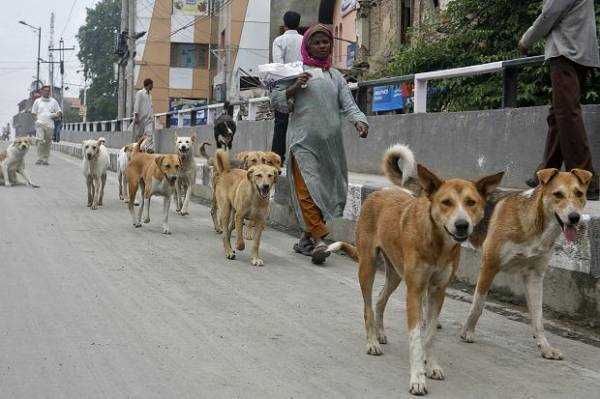A Public Health Concern Gains Momentum as Stray Dog Attacks Surge in the Valley
Srinagar, 06 April 2025- A Disturbing Trend in Public Safety
The serene landscapes of Kashmir have recently become the backdrop for a growing public health crisis. On a single day, hospitals across the region reported 44 cases of dog bites, with Srinagar alone accounting for 20 of these incidents. The alarming frequency of stray dog attacks has left residents worried and authorities under pressure to address an issue that poses both health and safety challenges.
An Epidemic of Fear
The latest surge in dog bite cases has sparked panic among the population, particularly in the most affected neighborhoods, such as Sakidafar, Rashanhar, and Nowpora in Srinagar. Residents in these areas recount harrowing incidents where aggressive stray dogs attacked multiple individuals, causing injuries and emotional trauma.
A local shopkeeper from Sakidafar shared, “We are afraid to step out in the evenings. The situation is so bad that even children cannot play outside without the fear of being attacked.”
The victims, including men, women, and children, were rushed to Shri Maharaja Hari Singh (SMHS) Hospital, which is grappling with the heavy influx of cases. Medical staff are reportedly working tirelessly to provide anti-rabies vaccinations and other necessary treatments, but the recurring nature of these attacks is stretching resources thin.
Why Are Dog Attacks Increasing?
Experts point to several factors contributing to the rise in dog bite cases:
- Stray Dog Population Growth: An unregulated increase in the stray dog population has intensified human-animal interactions, particularly in urban areas.
- Improper Waste Management: The lack of efficient waste disposal practices has led to an abundance of food sources for stray dogs, encouraging their proliferation.
- Insufficient Sterilization Programs: Efforts to sterilize and vaccinate stray dogs have not kept pace with the growing numbers.
Health and Economic Impact
The immediate concern surrounding dog bite cases is the risk of rabies, a fatal disease if untreated. Hospitals across Kashmir have reported a rising demand for anti-rabies vaccines, placing an additional burden on the already stretched healthcare system.
Beyond health implications, the economic costs of treating dog bite victims—ranging from hospital visits to vaccinations—have placed financial pressure on low-income families. For many, the situation highlights the need for urgent intervention from authorities.
Residents Demand Action
Communities across Kashmir are calling for immediate and effective measures to address the stray dog issue. Proposals include:
- Enhanced Sterilization Programs: Expanding sterilization efforts to control the stray dog population.
- Improved Waste Management: Implementing efficient garbage disposal systems to reduce food sources for stray dogs.
- Awareness Campaigns: Educating the public about preventing dog bites and understanding animal behavior.
- Increased Municipal Interventions: Strengthening municipal efforts to catch and rehabilitate stray dogs.
Authorities Respond
The Srinagar Municipal Corporation (SMC) has acknowledged the gravity of the situation. In a statement, an SMC official said, “We are ramping up our sterilization and vaccination drives and are working with local communities to find sustainable solutions. However, the public must also cooperate by disposing of waste responsibly.”
Despite assurances, residents remain skeptical, urging more immediate and visible action. “We’ve heard promises before, but nothing seems to change on the ground,” said a resident of Rashanhar.
The Road Ahead: Striking a Balance
While addressing the safety and health concerns of residents is paramount, experts caution against inhumane methods of controlling the stray dog population. Animal rights organizations advocate for ethical sterilization and vaccination campaigns to ensure a balanced approach that prioritizes both human safety and animal welfare.
As Kashmir continues to grapple with this growing issue, the need for collaborative efforts between authorities, communities, and organizations has never been more urgent. The question remains: How long will residents have to wait for effective solutions?


